Philippine brands conquering foreign terrain
Fast-food giant Jollibee Foods Corp (JFC) is the largest fast-food chain in the Philippines.
Philippine brands are entering overseas market by storm. Tina Arceo-Dumlao speaks with Jollibee, Gingersnaps and Max Restaurants.
The 10 countries in South-east Asia that comprise the Association of South-east Asian Nations (ASEAN) formally established on 31 December 2015 the Asean Economic Community (AEC), which is described as a single market for goods, services, capital and labour that has the potential to become one of the world’s largest economies.
With a combined gross domestic product of about US$2.6 trillion as of 2014 and a population of about 622 million, ASEAN could become the world’s fourth-largest economy by 2050 — from seventh today — if current growth trends continue.
These hard numbers have been attracting investors into the region, among them Philippine companies that have decided that they have the requisite financial, human and operational resources to venture outside their comfort zone.
These companies are driven by the desire to take advantage of the growth potential in other countries in the region, almost all of which are blessed with a young and increasingly affluent population that is open to trying something new, be it a product or a service, whether from their home country or their neighbours in the growing region.
Jollibee spreading the joy of eating
Among the most successful at conquering foreign shores is publicly traded Philippine fast-food giant Jollibee Foods Corp (JFC), the largest fast-food chain in the Philippines with a nationwide network of more than 750 stores and 80 stores across various brands such as Jollibee, Chowking and Red Ribbon outside the Philippines, with a presence in the US, China, Brunei, Vietnam, Hong Kong, Singapore, Saudi Arabia, United Arab Emirates, Qatar, Oman, Kuwait and Bahrain.

Jollibee, whose mission is “to spread the joy of eating”, took its first step towards international expansion when it opened its first overseas store in Brunei in 1987. Then it went to California, USA, in 1998 and then ventured into Saudi Arabia in 2008.
According to Luis Velasco, marketing head for the international unit of Jollibee, the initial target market was the substantial Filipino community abroad. But the brands steadily generated loyalty from among the mainstream markets, a testament to the ability of Filipino food — such as its bestselling Chicken Joy fried chicken and yumburgers — to appeal to foreign palates, allowing same-store sales to rise.
“In some countries such as Brunei, Jollibee has crossed over into the mainstream market where the majority of the stores’ customers are now Bruneians, making Jollibee the leading QSR chain in that country today. To cater to the locals’ taste preference in the countries where it operates, Jollibee tweaks some of its products to attract the mainstream market. To add, we already have 67 stores in Vietnam, which is the highest number of stores outside the Philippines that cater primarily to the locals there,” Velasco says.
The success today was born out of perseverance and the result of learning from painful and expensive mistakes.
Velasco shares that the growing pains included the challenge of finding the right partners. Because a foreign market is unknown territory, it is crucial for any brand to have a partner who knows the terrain well and will be able to provide the right information and formula to make the entry less painful and expensive.
All Jollibee stores in the US and Vietnam are company-owned, but in regions such as the Middle East and Asia, operations are through either franchising or joint ventures.
“Local franchisees have a thorough knowledge about the local market that can help Jollibee operate successfully in those countries,” he says.
“We need to ensure that we find the right people who also share the same vision and values, as well as the passion in operating a Jollibee store and can make it successful in that country,” Velasco adds.
Jollibee has learnt a lot since it ventured overseas and believes it is now in the right position to become even more aggressive in its expansion plans. With the markets opening up and more Filipinos going abroad, it believes there will always be room for its brands to make it big in new territories.
“JFC’s vision is to become one of the top five Quick Service Restaurant (QSR) companies in the world. Right now, it is No.1 in Asia and No.8 in the world in terms of market capitalisation. Our long-term goal is for the foreign business to account for at least 50% of our system-wide sales and we will achieve this through organic growth and acquisitions.
“Every year, we target to open an average of at least 200 stores, half of which are in foreign operations. Our priority foreign markets are China, the US and South-east Asia. We are also targeting new markets such as Canada and Europe,” Velasco says.
For those who want to follow in its footsteps, he adds: “Always dream big, and make sure your dreams are always backed up by hard work in providing only the best service and products to your future customers.”

Gingersnaps’ overseas foray
Clothing company Gingersnaps, which specialises in children’s and women’s clothes, has planted its flag in foreign shores too. It is now present in seven countries, with wholesale buyers getting products for sale in other parts of the world where it has no direct presence.
Going abroad, however, was not really part of the plan. The opportunity just arose and Gingersnaps grabbed it, says Gingersnaps owner Sabrina Uy.
“We never really thought about going overseas. It just fell into our laps. We started getting numerous enquiries from overseas and we thought to ourselves: This could be a good thing! It was a very exciting time for us as there were only a couple of Philippine brands from retail that made it overseas,” she says.
Gingersnaps was able to quickly venture abroad because its clothes have always had a global appeal. Uy says this is crucial for any company that wants to appeal to a wide audience.
“For any brand to thrive in the global market, it cannot just cater to a limited market. We have been fortunate to be accepted by both the mainstream markets and the Filipino market overseas. Proof of that is our presence in top malls. In the world-famous Dubai Mall, for example, we are situated beside Christian Dior kids as well as other prestigious brands,” shares Uy. “[We have always looked at] quality and design. We have our own signature look and feel.”
For Gingersnaps, the initial challenges that it encountered included having to conform with the fashion trends in other countries. As the Philippines has no distinct seasons, Gingernsaps’ clothes could be worn all year round. But for some countries, it had to come up with clothes suitable for seasons such as autumn and winter. It also had to strengthen its internal processes to accommodate operations of branches abroad.
“Most fashion brands come from the West so we had to work very hard to prove that our brand is world-class and we continue to do so today. Internally, we also had to catch up with the seasonal requirements such as the winter line. This was quite a challenge for us.
“We also had to learn the nuances of exporting, the business practices as well as the necessary documentation needed. It took some time to do this, but it was a great learning experience for our team,” says Uy.
Going forward, she says Gingersnaps remains keen on opening up more stores abroad through franchise partners, but admits that it is deliberate in its steps because it is quite selective when it comes to picking partners.
“We view it as a long-term relationship, like a marriage,” says Uy, “And as you go abroad, do what it takes to be the best. Represent your country well. Constantly innovate and most of all, love what you do.”
Max’s Restaurants on partners
Just as aggressive when it comes to conquering foreign territories is the listed Max’s Group Inc (MGI), one of the largest restaurant groups in the country. And like the other concepts, it initially catered to the Filipino diaspora but slowly gained acceptance in the mainstream market.
It opened its first international store in the 1980s through its flagship brand, Max’s Restaurant, on Gellert Boulevard, South San Francisco, USA, followed by the second one in 1984 in Los Angeles. Then it took it a gear up when it started to franchise the beloved 70-year-old Max’s brand, first in West Covina and has since grew the international operations to include more branches in the US, Canada and the Middle East.
“We were also able to further capitalise on the international market when we acquired the Pancake House Group in 2014. With a wider range of brands to offer and the depth of experience of our team, we believe we are ready to bring our loved brands to the global scene. We are proud to share that we have seen a very strong interest in our brands as we have signed five new foreign markets in 2015 plus China in the first month of 2016, and this makes us very confident that we can bring our international locations to 200 stores by 2020,” says Max’s CEO, Robert Trota.
Trota adds that the Max’s Group has a distinct advantage because it now has five brands that could be taken to other countries — Max’s Restaurant, Pancake House, Yellow Cab Pizza, Sizzlin’ Steak and Teriyaki Boy.
“This, I believe, is a very strong competitive advantage for us as we are able to present different brands that can cater to various lifestyle and dining needs. This means that there is also more flexibility for us to respond to what our business partners are looking for, and to offer them with a brand that would work well in a particular market,” he says.
“Max’s Restaurant will always be tied to Filipino traditions so we are present in locations that have a strong Filipino community. The other brands we are offering have a more international appeal and that is something that can go to a more diverse set of locations.
“An example would be how our premium New York-style pizza brand, Yellow Cab Pizza, will be opening soon in China. It is really about realising the potential of each of the brands and finding the right international partners who can help us bring these brands to new territories,” Trota adds.
Franchising is the Max’s Group’s expansion model as it aggressively pursues its plan and Peter King, CEO, International, Max’s Group, says finding the right partner was crucial in any company’s plans to go abroad, especially in the giant market of China.
Franchising is the Max’s Group’s expansion model as it aggressively pursues its plan and Peter King, CEO, International, Max’s Group, says finding the right partner was crucial in any company’s plans to go abroad, especially in the giant market of China.
“Most food brands would like to enter China because the potential benefits are significant. With its large population and increasing fondness for western food, there is an opportunity to have a large number of stores if you are successful. However, there are many challenges so MGI has entered China using a master franchise model. We believe we have a great Chinese partner with the Zhongfa Group who understands the local market and has access to great real estate,” King says.

“The international five-year strategy is to have at least 200 stores by the end of 2020. To achieve that goal, I need to sign at least three new partners each year plus ensure that our own existing franchisees continue to grow and open more stores. I am confident we can be successful in both these areas,” he adds.
As for advice, King says it is important to conduct thorough research on the area you are interested in.
“Are there any barriers to entry that you need to be aware of? Can you provide a robust supply chain solution? Most importantly, you need to ensure that you have a partner who matches your ideals, ambition and company culture,” King stresses.
Samie Lim, chair emeritus of the Philippine Franchising Association, adds in an interview that there are at least a dozen world-class Philippine franchisors already competing with other international franchisors in primary cities worldwide.
There are also at least 20 more that can penetrate second-tier cities in the AEC, and indeed the rest of the world, says Lim.
He believes that if they have made their mark in the local market, which is as competitive a retail market as those abroad, and with foreign franchises giving them a run for their money, they have the strength to make it elsewhere.
Samie Lim, chair emeritus of the Philippine Franchising Association, adds that there are at least a dozen world-class Filipino franchisors already competing with other international franchisors in primary cities worldwide.
“If they have successfully franchised their business in the country and have proven their ability to transfer the know-how of running the business, they have the financial resources and proper needed management support team and documented operational manuals, they can compete abroad,” he says.
Lim also stresses that when it comes to franchising, the Philippines has a wealth of knowledge and expertise to lean back on.
He shares that the Philippines has the second-largest pool of professionally-certified franchising executives in the world, next to the US and this, combined with the Filipino entrepreneurs’ search for growth, can be relied on to fulfil that desire to test its mettle against foreign counterparts.
If they can make it in the Philippines, they can make it anywhere.

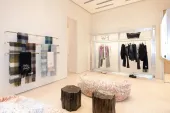







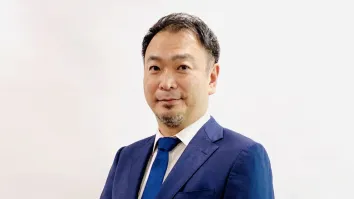
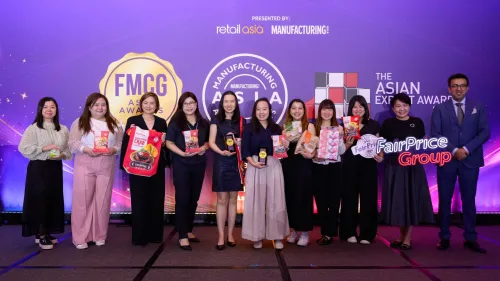
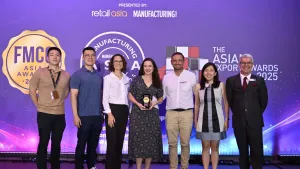
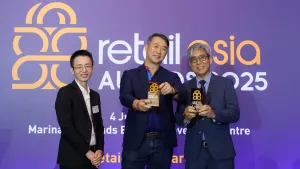
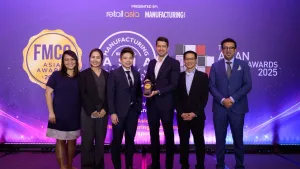





 Advertise
Advertise






